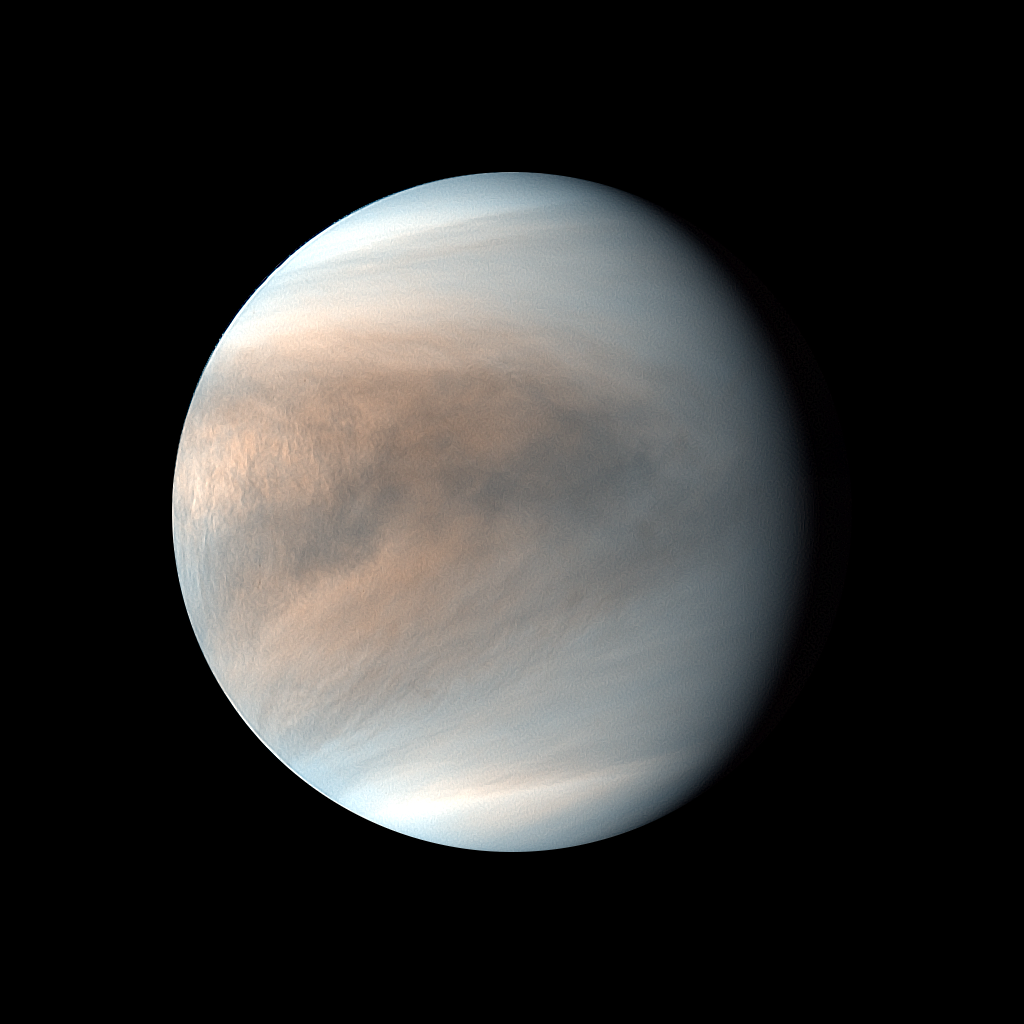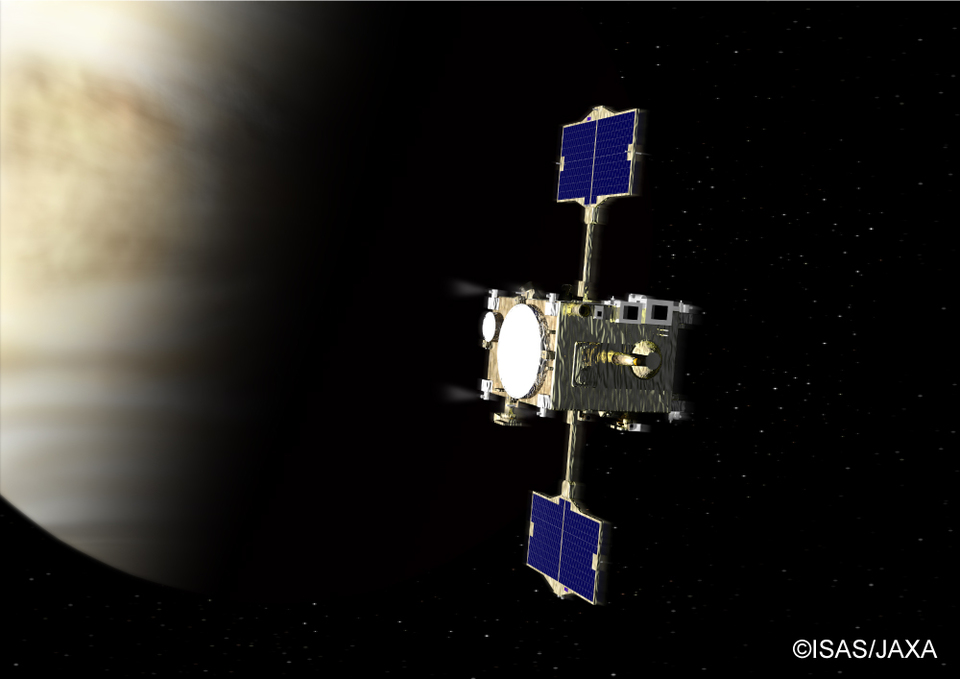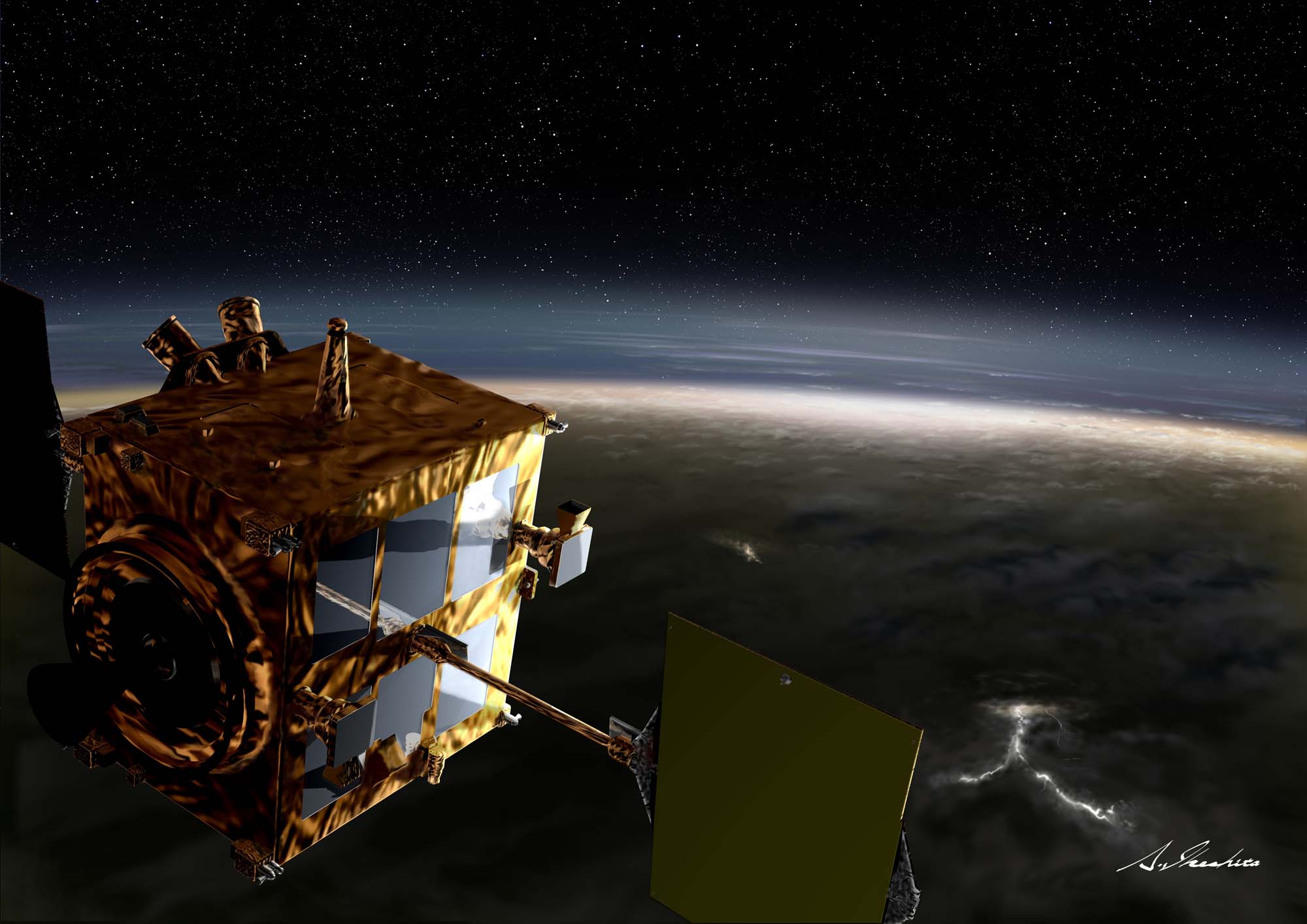The Strange Case of Missing Lightning at Venus

For decades, scientists have suspected that bolts of electricity pulse through the thick atmosphere of Venus, perhaps glinting off the world's acidic clouds.
Tantalizing glimpses have kept their hopes up, but all are hints. Scientists need more definitive signs, which remain elusive even three years into a dedicated lightning-hunter's orbit of our near-twin planet. It's the slow, frustrating, confusing reality of science that often slips out of the story of discoveries.
"When you read the history books, it all reads a bit like a crossword puzzle: you know, somebody came along and measured this and found this and everything all fit," Ralph Lorenz, a planetary scientist at Johns Hopkins University's Applied Physics Laboratory and lead author of a new paper about that dedicated lightning instrument's observations at Venus, told Space.com. "It's really much more like a detective story, where the detective's getting this testimony from this person and this testimony from that person."
Related: Can Venus Teach Us to Take Climate Change Seriously?
And so far, that detective isn't making much progress cracking the case. "It's impossible to take all of the reported observations at face value and make sense of them," Lorenz said. Nothing quite adds up.
All of the possible lightning observations to date are circumstantial at best. The Soviet Union's Venera 9 probe saw a glint that could have been a paint fleck. A few later Venera probes carried lightning detectors, but their data doesn't match what scientists would expect. Astronomers using a telescope in Arizona in 1993 spotted a series of flashes, although these also don't quite make sense. A series of magnetic pulses seen by the European Space Agency's Venus Express could have been created by some other phenomenon.
Even a careful experiment conducted by NASA's Cassini mission before its long journey to Saturn resulted in more confusion. The spacecraft carried a radio detector and needed to fly past both Earth and Venus anyway in order to reach its target. But while the instrument picked up more than a thousand flashes at Earth, it caught none at Venus.
Get the Space.com Newsletter
Breaking space news, the latest updates on rocket launches, skywatching events and more!
Enter Akatsuki, a Japanese orbiter mission to peer at our well-cocooned neighbor. The spacecraft launched in 2010, but months later, the burn that was meant to put the probe into orbit around Venus ended early, stranding the vehicle in space. Five years later, it had floated close enough to make another attempt at orbiting, which succeeded. But the spacecraft couldn't reach its original orbit and now circles the planet at a greater distance than planned.

That's particularly challenging for the lightning camera, which can now gather data at a rate one-tenth of what the instrument might have accomplished had the spacecraft's arrival gone smoothly. All told, Akatsuki's woes have meant that the lightning camera has gathered just shy of 17 hours of data.
But in all those hours, Lorenz and his co-authors have spotted zero flashes. The same instrument gathering the same data at Earth would have seen hundreds, he said. But at Venus, zilch. Not a single one. (The research is described in a paper published July 3 in the journal Geophysical Research Letters.)
Instead of a solution, scientists got a more complicated puzzle.
"If you don't see any flashes at all, that doesn't mean there aren't any flashes; it might mean that there are some and you missed them," Karen Aplin, a physicist at Bristol University in England who studies planetary lightning but was not involved in the new research, told Space.com. "They're saying that maybe there's no lightning, or maybe the lightning is really clustered somewhere, or it's very rare and it happens in bursts and they happened not to have seen it yet. And they're suggesting that these radio detections could be caused by something different to lightning — so they sort of look like lightning but they might not be."
Related: Japan at Venus: Photos from the Akatsuki Spacecraft's Mission
Venus isn't the only place where lightning has been an elusive target. Aplin said that scientists believe more planets in our solar system than not sport these electric dazzlers. Earth's, of course, are the easiest to study. But missions like the Voyager probes and Galileo spotted lightning at Jupiter and Saturn. On both gas giants, the atmospheres contain enough water vapor to host more-or-less terrestrial lightning.
Uranus and Neptune also seem to sparkle, although scientists have data from just one spacecraft to these locations, the Voyager 2 probe. These remote ice giants are too poorly understood for scientists to hazard a guess of precisely how such flashes might occur.
Mars, too, is suspected to host lightning, although it's just as elusive as its Venusian counterpart. Scientists believe Red Planet lightning — should it exist — would be driven by particles of dust rubbing against each other in the wind, an otherworldly mimic of the volcanic lightning that forms in clouds of rock particles expelled by an eruption here on Earth.
Scientists have even been down this strange missing-lightning road before, at Saturn's largest moon, Titan. When the European Space Agency was building its Titan probe, they worried it would need to navigate lightning bolts, but hunting for such a phenomenon came up empty. "Titan is another of these places where, after long and extensive study, we now have rather stringent upper limits on the amount of lightning activity," Lorenz said. "We can't say it doesn't happen, but we haven't seen it happen."
But while Venus mirrors Earth in many eerie ways, its lightning is trickier to explain, since its atmosphere is completely different, made predominantly of sulfuric acid, which can't hold an electric charge, Aplin said. "One of the things about Venus lightning is we don't understand how it would be generated."

Not knowing how it would form also makes it more difficult to predict where to look. And lightning isn't necessarily spread evenly across time and space. On Earth, for example, lightning is most common in the afternoon and over land. Scientists haven't established an equivalent connection on Venus, but Lorenz said one hypothesis is that lightning might be most common at dusk, as cloud tops cool, and over a mountain range, which Akatsuki data has already proved can create another atmospheric phenomenon called a bow wave. The result would be flashes that are very concentrated in time and space — and that means difficult to spot.
Scientists aren't trying to track down lightning just to determine which solar system destination is flashiest: Lightning is tied to a host of atmospheric characteristics that scientists want to better understand about the worlds around ours. "If you detect lightning you can use it to deduce other properties of the planet and its atmosphere," Aplin said. "It's quite a useful thing to measure because it will tell you several things at once."
One of those things is how safe the world is to explore. "It's a hazard, so you want to know if there's lightning somewhere because it might zap your spacecraft or it might zap your astronauts and it can do things like put out power systems," Aplin said.
And practicality isn't the only motivation: Scientists trying to understand how, and how often, life arose suspect that lightning's energy and chemistry could play a vital role in conjuring life from geology. "Lightning could be related to the origins of life," Aplin said. "Lightning brings energy to a system that could be implicated in life being formed ultimately."
At Venus at least, only time holds the clues that scientists need to sort out the conundrum. Akatsuki remains in its longer-than-hoped-for orbit, lightning camera at the ready. Maybe another spacecraft will follow in its wake someday soon. Lorenz suggested that a future mission could carry a trio of radio-based lightning detectors, which would let scientists locate any flashes they measured, as well as instruments tuned to the planet's electromagnetic field.
More practically, some of the circumstantial evidence for lightning at Venus stems from observations made by telescopes based right here on Earth, and such work could end up solving the mystery. But it could also be a wild goose chase that ends with nothing to show for it.
That goose chase may have already unfolded, perhaps even multiple times, without scientists' knowing about their colleagues' vain quests. "You get this thing that people aren't too keen to publish 'unsuccessful' experiments," Aplin said. "So it may be that people have looked and not seen anything and not published it."
Perhaps that's where Lorenz and his co-authors truly stepped ahead: by publishing their lightning narrative, despite the fact it ends in a continuing puzzle, with none of the tying off of loose ends that mystery novels offer to such deep satisfaction.
And after all, there's always a chance that the tell-all scene of the detective laying out the missing clues that gave it all away may still, someday, arrive.
"This is in many ways an unexciting result, that we haven't detected optical flashes," Lorenz said. "It's possible Akatsuki has just been unlucky and the next time we observe we'll actually detect hundreds of flashes, and that would be very exciting."
- 'Volcano of Water' Turns into a Lightning Rod in This Electrifying Image
- Lightning Strikes Russian Rocket During Satellite Launch (But Everything's Fine)
- Photos: Earth's Lightning Seen from Space
Editor's note: This article was updated to include a link to the research paper. Email Meghan Bartels at mbartels@space.com or follow her @meghanbartels. Follow us on Twitter @Spacedotcom and on Facebook.
Join our Space Forums to keep talking space on the latest missions, night sky and more! And if you have a news tip, correction or comment, let us know at: community@space.com.

Meghan is a senior writer at Space.com and has more than five years' experience as a science journalist based in New York City. She joined Space.com in July 2018, with previous writing published in outlets including Newsweek and Audubon. Meghan earned an MA in science journalism from New York University and a BA in classics from Georgetown University, and in her free time she enjoys reading and visiting museums. Follow her on Twitter at @meghanbartels.









